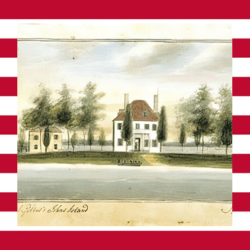
Few records remain of the “Heroine of Stono,” but to begin we know that her name was Mary Anna Gibbes, and she was born in 1766 in Charleston South Carolina. Her father was Robert Gibbes, a wealthy estate owner, and her mother was his second wife, Sarah Reeve Gibbes. She was only 13 years old when the British attempted a siege on her town.
The panic felt by such a young girl as she saw troops approaching her home and witnessed her town sent into disarray must be unimaginable. Yet, despite this, she was able to maintain her composure and focus on what mattered most to her—protecting those she cared about.
When the British troops arrived, Marie’s infant cousin was living within them on the estate, and had been left behind in the rush to flee; many feared the child would be killed or that it would be impossible to recover and reunite him with his parents in the event of a complete British takeover. Even though Marie had just turned into a teenager, she sprang into action to save the baby and returned to the home. She was able to recover her cousin and bring him to safety all while protecting herself.
Little more is known about the specific details surrounding Mary’s bravery, and unfortunately, the only other significant details recorded surrounding her are in relation to the man that she married, Alexander Garden. Many more details about him can be found, such as the fact that he was a Scottish-born physician and botanist, as well as a documented Revolutionary Army supporter. The two eventually settled down and married when Mary was 18 and Alexander was 27 and following the War of Independence, she supported him through the election races for the South Carolina General Assembly where he served one term.
The story of Mary’s bravery can be turned into a larger conversation about the lack of recognition of women throughout the Revolutionary War and certainly begs many questions about other acts of heroism that may have gone unrecorded or unrecognized. Just because little is known about the actions of young Gibbes does not detract from the recognition that she deserves. At such a young age, she literally risked her life to save another child who was rendered helpless yet her story has become glossed over like those of many other women.
Learning about girls like Mary can help people remember that just because there is little documentation surrounding the presence of women throughout history does not mean that they were not as equally brave as men; it shows that women and girls continued to be brave and act heroically even without the accompanying prospect of fame. Their stories might take a little bit more digging to be uncovered or understood, but they nonetheless require our recognition and support.
